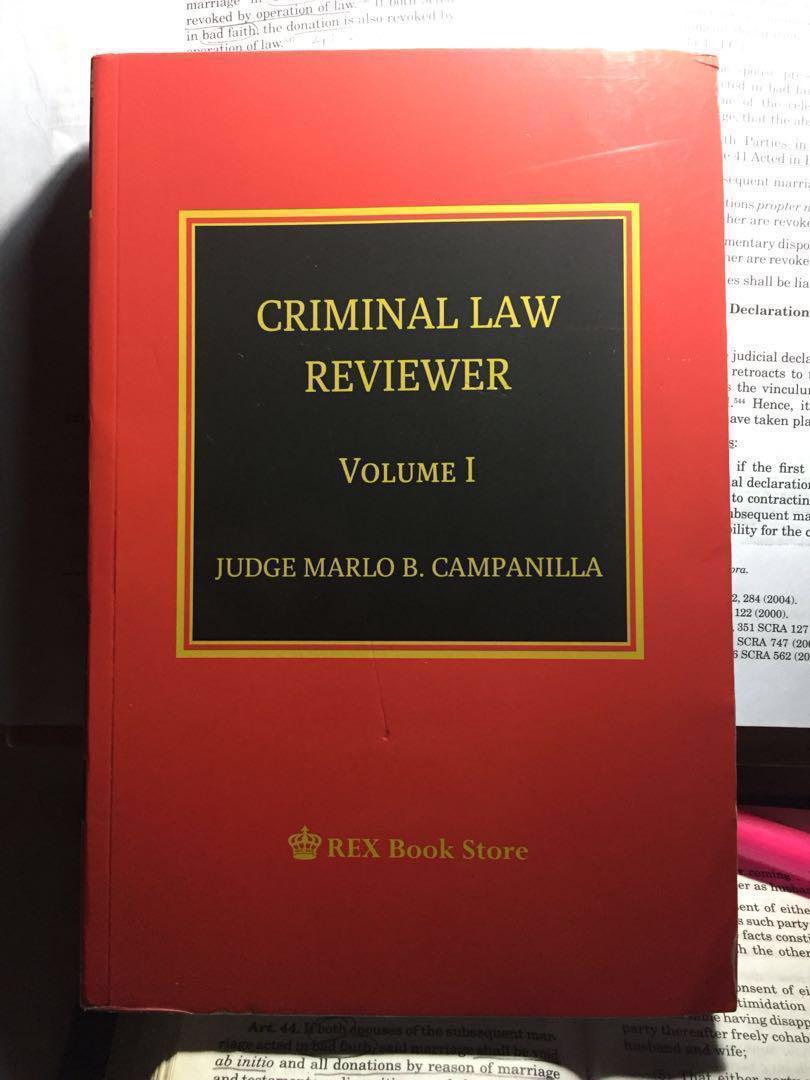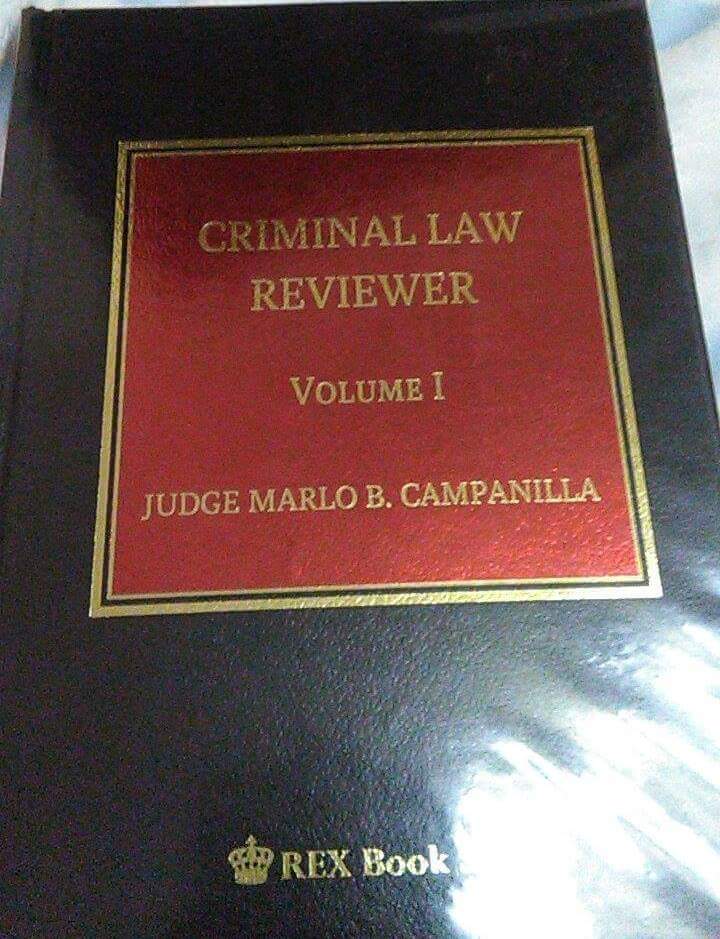Campanilla: Congress should amend child abuse law


Judge Marlo Campanilla is a celebrity author, lecturer and expert in criminal law and special penal laws. His books are available in fine bookstores nationwide. https://www.rexestore.com/law-library-essentials/1756-criminal-law-reviewer-volume-i-cloth-bound.html.
READ MORE: Marlo Campanilla. Most complicated rules in Criminal Law. 4 January 2020. www.facebook.com/notes/marlo-campanilla/most-complicated-rules-in-criminal-law/3076505429035673.
Under Section 5 (b) of RA No. 7610, the penalty of reclusion temporal in its medium period to reclusion perpetua shall be imposed upon those who commit the act of sexual intercourse of lascivious conduct with a child exploited in prostitution or subject to other sexual abuse; Provided, That when the victims is under twelve (12) years of age, the perpetrators shall be prosecuted under the Revised Penal Code, for rape or lascivious conduct, as the case may be: Provided, That the penalty for lascivious conduct when the victim is under twelve (12) years of age shall be reclusion temporal in its medium period.
The provision in Section 5 (b) of RA No. 7610 has created the most complicated rules in criminal law.
1. Qualifying provisos - Section 5 (b) contains a provision with two qualifying provisos. The provision prescribes reclusion temporal in its medium period to reclusion perpetua for child abuse and child. The first proviso requires the prosecution of child abuse and child prostitution against an under-12-year-old victim for statutory rape of acts of lasciviousness. The second proviso prescribes reclusion temporal in its medium period for lascivious conduct against an under-12-years-old victim. In People vs. Tulugan, G.R. No. 227363, March 12, 2019, the second proviso qualifies the first proviso that immediately preceded it. With this interpretation, the penalty for child abuse and child prostitution is reclusion temporal in its medium period to reclusion perpetua (the provision); the penalty for rape committed against an under-12-years-old victim is that prescribed by the Revised Penal Code (first proviso); the penalty for lascivious conduct committed against an under-12-years-old victim is reclusion temporal in its medium period to reclusion perpetua.
2. Non-application of Article 48 – If the acts constitute sexual abuse or child prostitution under R.A. No. 7610, and rape or acts of lasciviousness under the Revised Penal Code, the offender cannot be prosecuted for a complex crime. Sexual abuse or child prostitution for being an offense under special law cannot be made a component of a complex crime. (People vs. Abay, G.R. No. 177752, February 24, 2009; People vs. Tulugan, G.R. No. 227363, March 12, 2019)
3. Prosecution for single crime - If the acts constitute sexual abuse or child prostitution, and rape or acts of lasciviousness, the offender cannot be prosecuted for both crimes under RA No. 7610 and the Revised Penal Code because of the rule on double jeopardy.
The essence of sexual abuse or child prostitution and rape or acts of lasciviousness is having sexual intercourse without consent of the victim, or with a victim, who has no capacity to give consent. Since these crimes are identical, the Supreme Court in People vs. Abay, G.R. No. 177752, February 24, 2009 ruled that the offender cannot be accused of both crimes because his right against double jeopardy will be prejudiced.
Other view: In People vs. Udang, G.R. No. 210161, January 10, 2018, the Supreme Court, Third Division, ruled that offender can be liable for rape and sexual abuse because they are two (2) separate crimes with distinct elements. It seems that Udang case is a stray decision. The Abay principle is controlling since it was affirmed by the Supreme Court in several cases such as People vs. Dahilig, G.R. No. 187083, June 13, 2011, People vs. Pangilinan, G.R. No. 183090, November 14, 2011; People vs. Matias, G.R. No. 186469, June 18, 2012; Alberto vs. Hon. Court of Appeals, G.R. No. 182130, June 19, 2013; People vs. Tubillo, G.R. No. 220718, June 21, 2017, People vs. Ejercito, G.R. No. 229861, July 02, 2018; People vs. Jaime, G.R. No. 225332, July 23, 2018; People vs. Laguerta, G.R. No. 233542, July 09, 2018; People vs. Mabalo, G.R. No. 238839, February 27, 2019 and People vs. Tulugan, G.R. No. 227363, March 12, 2019.
4. Prosecution for the graver crime – If the acts constitute sexual abuse or child prostitution, and rape or acts of lasciviousness, the offender shall be prosecuted either under the Revised Penal Code or R.A. No. 7610 (People v. Abay, supra), whichever prescribes a graver penalty. (Dimakuta v. People, G.R. No. 206513, October 20, 2015; People vs. Tulugan, G.R. No. 227363, March 12, 2019) Between sexual crime against a minor under the Revised Penal Code and that under R.A. No. 7610, the higher penalty must be applied for the minor victim’s benefit. The Supreme Court has held that imposing a lower penalty for the offender is undeniably unfair to the child victim. (People v. Pusing, G.R. No. 208009, July 11, 2016, Justice Leonen).
If the acts constitute sexual abuse or child prostitution, and rape through sexual intercourse, or special complex crime of rape through sexual assault with homicide, the perpetrator shall be prosecuted under the Revised Penal Code since this law prescribes a penalty graver than that prescribes by RA No. 7610.
If the acts constitute sexual abuse or child prostitution, and rape through sexual assault or acts of lasciviousness, the perpetrator shall be prosecuted under the provision of Section 5 (b) of RA No. 7610 since this law prescribes a penalty graver than that prescribes by the Revised Penal Code. In such a case, the crime shall be designated as lascivious conduct under RA No. 7610. (People vs. Molejon, G.R. No. 208091, April 23, 2018)
5. Special Rules on under-12-years-old victim – If the victim of sexual abuse or child prostitution is under 12 years of age, there are two qualifying provisos under Section 5 (b) of RA No. 7610 that must be observed.
First proviso - If the victim of sexual abuse or child prostitution is under 12 years old, the perpetrator shall be prosecuted for statutory rape under the Revised Penal Code pursuant to the first proviso of Section 5 (b) of RA No. 7610.The first proviso is applicable to rape through sexual intercourse and qualified rape through sexual assault against a child under 12 years of age.
In People v. Bonaagua, G.R. No. 188897, June 6, 2011, the accused inserted his tongue (instrument or object) in the genital orifice of his 8-old-year daughter. The accused was convicted for qualified rape through sexual assault with the circumstance of relationship and sentenced to suffer reclusion temporal under the Revised Penal Code pursuant to the first proviso of Section 5 (b) of RA No. 7610.
In People v. Pusing, G.R. No. 208009, July 11, 2016 (Justice Leonen), the accused inserted his penis in the mouth of a child, whose mental age is 9 years. Accused was convicted of qualified rape through sexual assault with the circumstance of mental disability, and was sentenced to suffer reclusion temporal under the Revised Penal Code pursuant to the first proviso of Section 5 (b) of RA No. 7610.
Second proviso – If the victim of sexual abuse or child prostitution involving lascivious conduct is under 12 years old, the perpetrator shall be prosecuted under the Revised Penal Code but the penalty for lascivious conduct is reclusion temporal in its medium period pursuant to the second proviso of Section 5 (b) of RA No 7160.
The second proviso is appliable to acts of lasciviousness against a child under 12 years of age. In this situation, the crime should be designated as acts of lasciviousness under Revised Penal Code in relation to RA No. 7610 (People vs. Molejon, G.R. No. 208091, April 23, 2018; 1993 and 2016 Bar Exams)
The second proviso is appliable to simple rape through sexual assault against a child under 12 years of age. In this situation, the crime should be designated as rape through sexual assault under Revised Penal Code in relation to RA No. 7610. (People vs. Tulugan, G.R. No. 227363, March 12, 2019)
In People v. Chingh, G.R. No. 178323, March 16, 2011, the accused through force inserted his finger into the genital orifice of the 10-year-old victim. Accused was convicted of rape through sexual assault. The penalty for rape through sexual assault under the Revised Penal Code as amended by RA No. 8353 is prision mayor. On the other hand, the penalty for acts of lasciviousness under second proviso of Section 5 (b) RA No. 7610 is reclusion temporal in its medium period. To impose the lighter penalty of prision mayor for rape through sexual assault under R.A. No. 8353 is unfair to the victim. To prevent unfairness, the Supreme Court imposed the penalty of reclusion temporal in its medium under R.A. No. 7610. It is not the intention of R.A. No. 8353 to disallow the imposition of graver penalty under R.A. No. 7610 if the victim of sexual abuse is under 12 years of age.
In Ricalde v. People, G.R. No. 211002, January 21, 2015 (Justice Leonen), the accused through force inserted his penis into the anal orifice of the 10-year-old victim. Accused was convicted of rape through sexual assault under the Revised Penal Code. The penalty of reclusion temporal in its medium period under the second proviso of Section 5 (b) of RA No. 7610 pursuant to the case of Chingh.
The Bonaagua case in relation to first proviso applies to qualified rape through sexual assault while Chingh case in relation to the second proviso applies to simple rape through sexual assault. In the Chingh case, the Supreme Court imposed the penalty of reclusion temporal in its medium period under the second proviso of Section 5 (b) of RA No. 7610 for simplerape through sexual assault because it is graver than that under the Revised Penal Code. However, the penalty for qualified rape through sexual assault under the Revised Penal Code is reclusion temporal. Since the Revised Penal Code already prescribes a grave penalty for qualified rape through sexual assault, the Supreme Court in Bonaagua case applied the first proviso, and not the second proviso in relation to the Chingh case.
Recommended Amendment:
Congress should reexamine Section 5 (b) of RA No. 7610. Complicated rules will prejudice the interest of sexually abused children. Under this provision, the penalty for lascivious conduct against a child, who is 12 years old or above is reclusion temporal in its medium period to reclusion perpetua, while the penalty for lascivious conduct if the child is under 12 years old is only reclusion temporal in its medium period. This is very absurd since the penalty is lesser if the victim is under 12 years of age. In sum, tender age of the victim mitigates the criminal liability of the offender. Wow naman !!!!

To simply the rules under Section 5 (b), this writer submits a proposed amendment to this provision, which reads as follows:
"Section 5. x x x The penalty of reclusion temporal in its medium period to reclusion perpetua shall be imposed upon the following:
x x x (b) Those who commit the act of sexual intercourse of lascivious conduct with a child exploited in prostitution or subject to other sexual abuse; Provided, That the penalty for lascivious conduct shall be reclusion temporal in its medium period. Provided, That if sexual abuse or child prostitution is penalized by the Revised Penal Code with a higher penalty, the perpetrators shall be prosecuted under the Revised Penal Code."
READ MORE: Marlo Campanilla. Most complicated rules in Criminal Law. 4 January 2020. www.facebook.com/notes/marlo-campanilla/most-complicated-rules-in-criminal-law/3076505429035673.
In his books on penal laws, like a skillful artist, Judge Marlo went through the labyrinth of old doctrines and new principles, the difficult or doubtful questions of law and the recently promulgated Supreme Court decisions with an incisive analysis presented in a plain and simple manner which makes his book easy to read, understand, and retained in our already cluttered memory. Available in fine bookstores nationawide. https://www.rexestore.com/law-library-essentials/1756-criminal-law-reviewer-volume-i-cloth-bound.html




